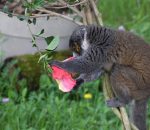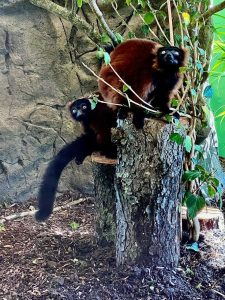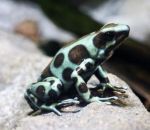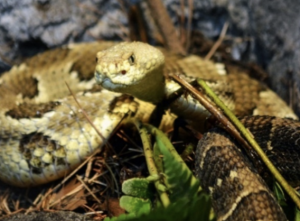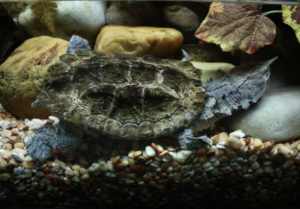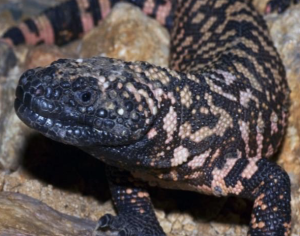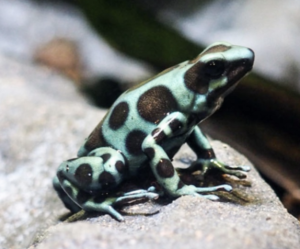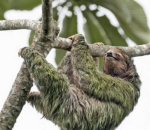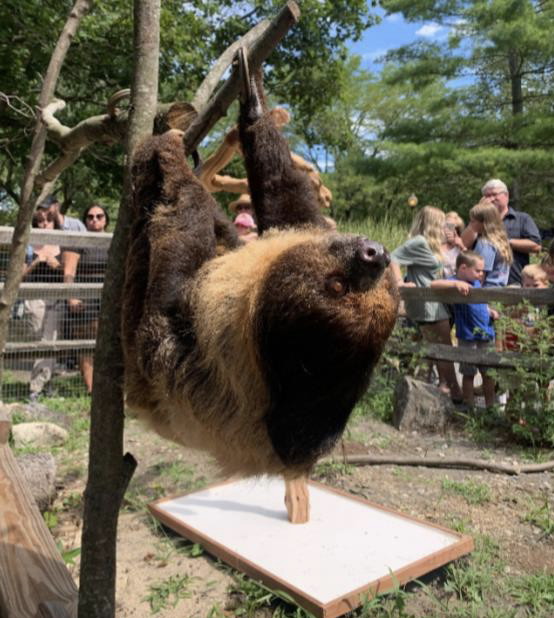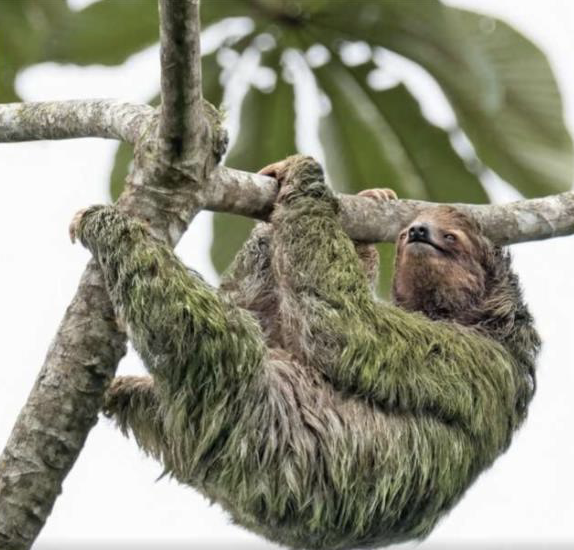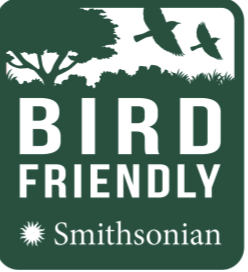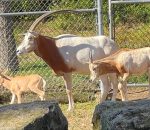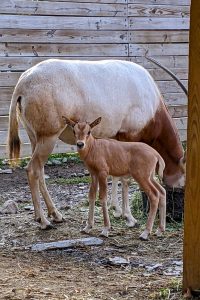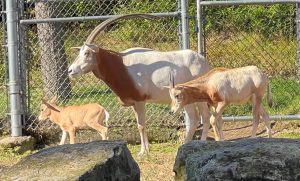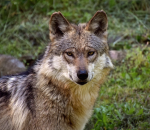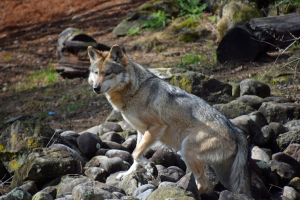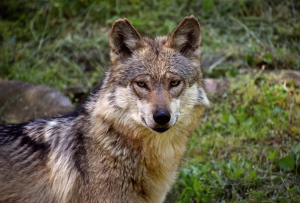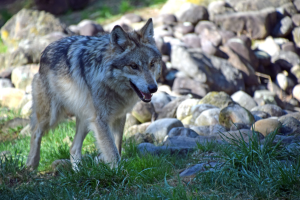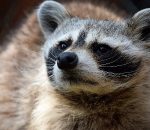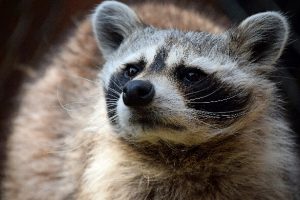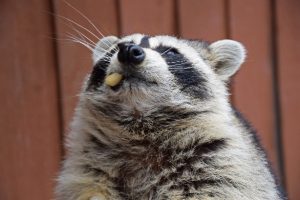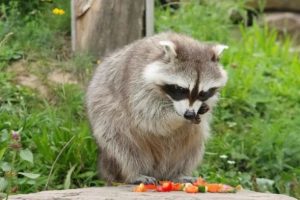Snakes, Lizards, and Frogs, Oh My!
Why Should We Care About Reptiles and Amphibians?
If you have visited the Lehigh Valley Zoo, chances are you’ve met our river otter Luani, watched our penguins get fed, or got the chance to feed our giraffes! But have you ever ventured into our Reptile and Amphibian Discovery Center? Inside of our RAD Center, you will find a variety of different reptiles, including snakes, lizards, and turtles, as well as various amphibians. Reptiles and amphibians may not be at the top of your must-see list, but these creatures are very important to our ecosystem and the world we live in. Hopefully by the end of this blog post you will consider adding a reptile or amphibian to that list.

Let’s start off with probably the most feared reptile: the snake. While you might not be particularly fond of them, snakes are a vital part of the ecosystem’s food chain. Snakes are considered both prey and predator! They provide a great snack for bird, mammal, and even other reptile species. They are also excellent pest controllers. By eating small pest species, like rodents and slugs, snakes can maintain these populations so that they don’t get out of control. Pests like rodents often carry diseases that can affect humans, so without snakes we’d have a ton of rats and mice running around possibly making us very sick! Here in our RAD Center, we have some venomous snakes including our dusky pigmy and timber rattlesnakes. Did you know that venom from rattlesnakes can be used to further medical research? Snake venom contains many different enzymes that are not only useful to the snake for immobilizing and breaking down prey but are also useful to humans in the treatment of diseases such as thrombosis, arthritis, and cancer.

Next, we have our turtles. Do you know some of the differences between turtles and tortoises? One of the biggest is that turtles tend to live more in the water while tortoises prefer the land. Since these species inhabit both land and water, it is crucial that we help keep both our turtles and tortoises safe. Sea turtles help regulate and maintain the health of our oceans. Apex predators, like the alligator snapping, leatherback, and hawksbill turtles, help to keep certain populations in check. Without turtles our oceans would be overrun by sponges, jellyfish, etc, which are detrimental to many coral and fish species! Sea turtles also provide homes for many marine species, such as barnacles, algae, and epibionts – right on their shell! Carrying these small marine species around with them allows turtles to provide a traveling food source for fish and shrimp. On the land, tortoises act as environmental engineers! Because Gopher tortoises dig extensive burrows which are used by many other animals, the Gopher tortoise is actually considered a keystone species! Tortoises are also excellent gardeners. They eat a variety of fruits and vegetables but are unable to properly digest the seeds. Therefore, when the tortoise goes to the bathroom it will deposit those seeds in a naturally fertilized package. Check out RAD to meet our awesome turtles, like the Mata-Mata or our spotted turtles!

What about our lizards? Lizards come in a variety of shapes, sizes, and even colors, and can be found on every continent except Antarctica. Much like snakes, lizards are important to the food chain as both predators and prey. Lizards provide meals for various birds, mammals, and reptile species, while also preying upon various pest species, such as insects. Keeping insect populations in check is particularly useful to humans because insects can destroy crops and spread disease. For example, the Western fence lizard is a type of insectivore that loves to dine on ticks. By eating ticks and decreasing the number of ticks found in the wild, they help reduce the spread of tick-borne diseases like Lyme disease. Additionally, did you know that there are venomous lizards? Three in fact! The Komodo dragon, the Mexican- beaded lizard, and the Gila monster. Research has found that venom from lizards, like the Gila monster, contains hormones that can help with the treatment of diabetes. If you’d like to see one of these venomous lizards up close, then check out our Gila monster exhibit in the RAD Center.
 And finally, we have our amphibians! Amphibians can come in many shapes, sizes, and colors. In our RAD Center our amphibians include frogs, axolotls, hellbenders and more. In the wild, tadpoles and their adult forms, frogs, prove a tasty snack for mammal, reptile, bird, and even other amphibian species. Tadpoles also contribute to the ecosystem by eating algae which helps to regulate blooms and minimize any algae contamination. Additionally, amphibians are an excellent indicator species. Indicator species can tell us about the environmental condition of an ecosystem simply by living there. If there is an abundance of the indicator species in that ecosystem, then we know it is healthy. If there is an absence or decline, then we know there may be something negatively affecting that area. Amphibian’s permeable skin can easily allow toxins and pollutants to enter their bodies, which means they cannot survive in polluted habitats. If frog population numbers begin to decline, then there is a strong possibility that that habitat could be polluted. Hellbenders, the national amphibian of PA, act as an indicator species for many of Pennsylvania’s waterways. If you see one in the water, chances are it doesn’t have many pollutants in it! Finally, did you know that amphibians can also produce toxins? While many amphibians’ toxins are not lethal to humans, there are a few that can be quite deadly. For example, the golden poison dart frog has enough toxin to kill 10 grown men! They get their toxin from the food they eat: formicine ants. This toxin can be used in research to create painkillers that might be more effective than some of our strongest medications.
And finally, we have our amphibians! Amphibians can come in many shapes, sizes, and colors. In our RAD Center our amphibians include frogs, axolotls, hellbenders and more. In the wild, tadpoles and their adult forms, frogs, prove a tasty snack for mammal, reptile, bird, and even other amphibian species. Tadpoles also contribute to the ecosystem by eating algae which helps to regulate blooms and minimize any algae contamination. Additionally, amphibians are an excellent indicator species. Indicator species can tell us about the environmental condition of an ecosystem simply by living there. If there is an abundance of the indicator species in that ecosystem, then we know it is healthy. If there is an absence or decline, then we know there may be something negatively affecting that area. Amphibian’s permeable skin can easily allow toxins and pollutants to enter their bodies, which means they cannot survive in polluted habitats. If frog population numbers begin to decline, then there is a strong possibility that that habitat could be polluted. Hellbenders, the national amphibian of PA, act as an indicator species for many of Pennsylvania’s waterways. If you see one in the water, chances are it doesn’t have many pollutants in it! Finally, did you know that amphibians can also produce toxins? While many amphibians’ toxins are not lethal to humans, there are a few that can be quite deadly. For example, the golden poison dart frog has enough toxin to kill 10 grown men! They get their toxin from the food they eat: formicine ants. This toxin can be used in research to create painkillers that might be more effective than some of our strongest medications.
As you can see, reptiles and amphibians play a huge part in keeping our world healthy and happy. Hopefully, you’ve learned something new about these amazing animals and are willing to add one of them to your must-see list. Be sure to visit our RAD Center and check these RADically cool species for yourself!
Written by Emily Granville
Education Specialist
Lehigh Valley Zoo | Schnecksville, PA
Back to blog posts
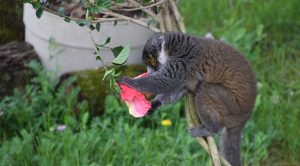 Many species of lemurs love to eat fruit, but they cannot digest the seeds. As the lemurs movethroughout the forests, the seeds travel through their bodies until they eventually come out in the lemurs’poop! This creates a natural fertilizer for the seeds to grow in. Many lemurs also enjoy eating nectar. They’ll use their long narrow snouts and long tongues to eat the nectar without damaging the flowers. As they do this, the fur around their snouts and cheeks collect pollen. They can then transfer that pollen to other plants helping to pollinate them!
Many species of lemurs love to eat fruit, but they cannot digest the seeds. As the lemurs movethroughout the forests, the seeds travel through their bodies until they eventually come out in the lemurs’poop! This creates a natural fertilizer for the seeds to grow in. Many lemurs also enjoy eating nectar. They’ll use their long narrow snouts and long tongues to eat the nectar without damaging the flowers. As they do this, the fur around their snouts and cheeks collect pollen. They can then transfer that pollen to other plants helping to pollinate them!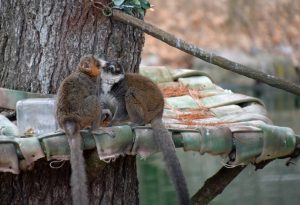 We have a few lemurs that call the Lehigh Valley Zoo home. Let’s, meet them! First up, we have our mongoose lemurs: Abby and Mico. Abby is our female and Mico is our male. You can tell them apart by looking at the color of their cheeks – Mico has red on his cheeks and “beard”! Abby has come out of her shell a lot since being here at the zoo. At first, she was hesitant and always let Mico do things first, but now she knows what she wants and isn’t shy about saying when she wants it. Mico is incredibly inquisitive. He enjoys investigating things and figuring out the various spots keepers may have left food. He is also quite smart and has picked up on training very quickly.
We have a few lemurs that call the Lehigh Valley Zoo home. Let’s, meet them! First up, we have our mongoose lemurs: Abby and Mico. Abby is our female and Mico is our male. You can tell them apart by looking at the color of their cheeks – Mico has red on his cheeks and “beard”! Abby has come out of her shell a lot since being here at the zoo. At first, she was hesitant and always let Mico do things first, but now she knows what she wants and isn’t shy about saying when she wants it. Mico is incredibly inquisitive. He enjoys investigating things and figuring out the various spots keepers may have left food. He is also quite smart and has picked up on training very quickly.